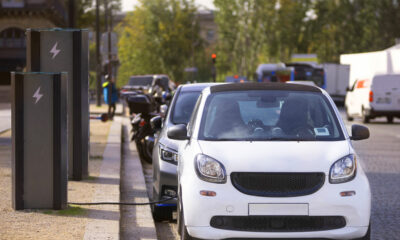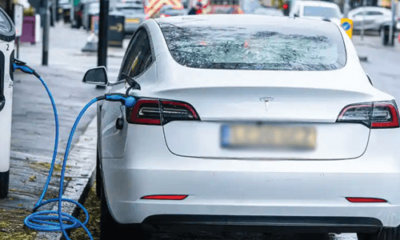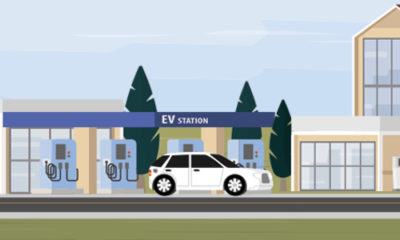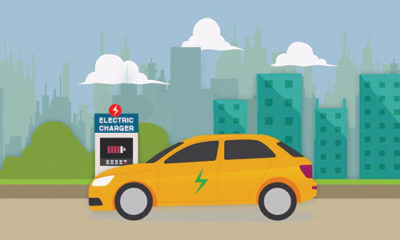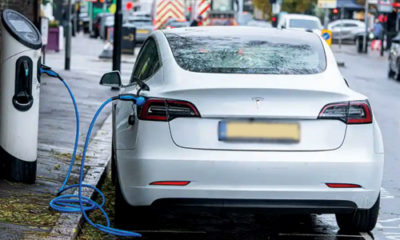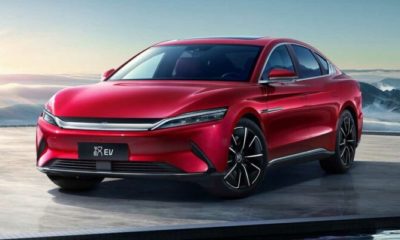News
EV charging models for housing societies


Source:https://evcd.in/ev-charging-models-for-housing-societies/
With the rise in popularity of EVs, the business associated with charging facilities is also booming. Since a major part of the charging needs are met by home chargers, developers are ensuring setting up charging infrastructure in the residential societies built by them. In doing so, two models – OPEX and CAPEX – are being followed. Let’s see how these models work.
The popularity of electric vehicles has gone up exponentially in the country with the number of EVs having tripled in the past two years. In India, Tata Motors is leading the way with its EV lineup, which includes Nexon and Tiago variants, priced at a competitive price of less than Rs 15 lakh. As opposed to that, EVs from competitors, like MG Motors ZS and Hyundai Kona, are far more expensive.
Despite their rise in popularity, range anxiety and high cost are still the biggest challenges confronting EV sales. To tackle the range anxiety of consumers, the Government is setting up EV charging stations across the country – on highways, hotels and gas stations. It has also shortlisted important tourist destinations for setting up EV charging infrastructure. DC fast-chargers will be installed on these routes at every 50 km for the benefit of EV users.
- To tackle the range anxiety of consumers, the Government is setting up EV charging stations across the country – on highways, hotels and gas stations.
- AC slow-chargers are required for residential societies for overnight EV charging. These chargers usually take seven to eight hours to charge an EV completely.
- The OPEX model benefits the builder but not the consumers, who end up paying way above the regular electricity tariff, about Rs 4 to 5 extra per unit.
- In the CAPEX model, the consumers are required to pay a nominal cost of Rs 20,000 upfront to have an EV charging station set up in their parking areas.
However, 80 per cent of the EV-charging needs can be met by home chargers. AC slow-chargers are required for residential societies for overnight EV charging. These chargers usually take seven to eight hours to charge an EV completely.
Many developers are opting for OPEX model of EV chargers in the residential apartments built by them. In this model, builders don’t have to pay anything and the entire cost is borne by the manufacturer of the EV charger. The charger operator then charges a premium on per unit consumed by the consumer. This model benefits the builder but not the consumers, who end up paying way above the regular electricity tariff, about Rs 4 to 5 extra per unit.
Another model is the CAPEX model wherein the consumers are required to pay a nominal cost of Rs 20,000 upfront to have an EV charging station set up in their parking areas. The tariff is the same as the regular tariff paid by the consumers for electricity usage in their flats. Besides benefiting the end-consumers, the CAPEX model helps promote greener future, envisioned by the Government.
-



 News3 weeks ago
News3 weeks agoKW Delhi 6 Mall Onboards New Brands
-



 News3 weeks ago
News3 weeks agoManasum Senior Living Launches IKIGAI GOA, A Senior Living Community in North Goa, in collaboration with Prescon Homes
-



 News2 weeks ago
News2 weeks agoGodrej Properties Sells Rs 3k cr+ Homes of Godrej Zenith, Gurugram, within 3 days
-



 News3 weeks ago
News3 weeks agoBridging India Divide: Top 5 Tier- 2 Cities to Focus On
-



 News3 weeks ago
News3 weeks agoCommercial Realty Gets Tech Savvy: Fast Construction, Enhanced Convenience
-



 News3 weeks ago
News3 weeks agoMultipoint Connection – A Definite Boon
-



 News2 weeks ago
News2 weeks agoRBI’s Status Quo on Key Policy Rates to Help Maintain the Real Estate Growth Momentum, Say Industry Stalwarts
-



 News3 weeks ago
News3 weeks agoSacred Cities See a Retail Boom as Spiritual Tourism Surge: CBRE Report







